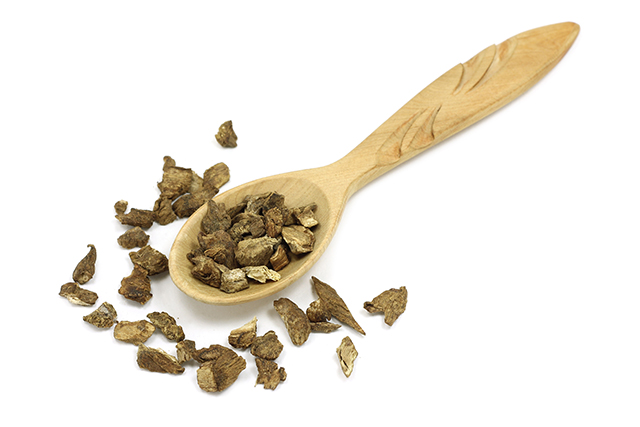Ear acupuncture found to aid substance abuse treatments
06/25/2019 / By Ralph Flores

Substance abuse is a serious problem in both the U.S. and other parts of the world. Based on estimates from the Centers for Disease Control and Prevention, at least 22 million Americans suffer from either a drug or alcohol problem. Among them, at least 95 percent of these people do not know that they even have the condition.
Those who know about their problems don’t fare any better: The Department of Health and Human Services estimates that over 273,000 patients who knew that they had a substance abuse problem were unsuccessful in obtaining the care they need.
In a study published in the journal Behavioral Sciences, researchers found ear acupuncture can improve and sustain positive outcomes when used as an adjunct in concert with traditional therapies for substance abuse.
Substance abuse isn’t just limited to drugs and alcohol
While CDC estimates for drug and alcohol problems reveal the country’s crippling problem with certain forms of substance abuse, the disorder covers more than just these two substances.
The fifth edition of the Diagnostic and Statistical Manual of Mental Disorders (DSM-5) notes that substance abuse disorder can occur even if the person is not addicted to the substance. Aside from alcohol, the DSM-5 recognizes the disorder from the use of opioids, sedatives, stimulants, cocaine, and even caffeine, among others.
Health officials draw the line between substance use and abuse when its repeated use leads to significant impairment, such as:
- Taking it in larger amounts or longer than the person should
- Cravings and the need to use the substance
- Failing to meet responsibilities
- Risky behavior, especially when it comes to using the substance
- Development of withdrawal symptoms, which can be relieved by increased intake
In the U.S., substance abuse is considered a major problem, as Natural News has repeatedly covered. In fact, Mike Adams, the Health Ranger, has uncovered the secret history tying Big Pharma with most of the street drugs that contribute to this debilitating epidemic.
“Drug companies think this number is too low,” said Adams. “Their goal is to have 100 percent of the U.S. population taking not just one drug per day, but multiple drugs every day, for life.”
The effects of acupuncture when used as an adjunct therapy
In the study, the researchers used the National Acupuncture Association protocol (NADA). NADA is one of the most common forms of acupuncture treatment in the U.S., with studies showing its benefit when used to manage symptoms of depression, anxiety, anger, and impaired concentration, as well as those that affect body aches, headaches, and energy.
The team conducted a clinical trial between July 2015 to March 2016, with over 100 patients participating. Before the study, the participants reported alcohol, drug, and tobacco use and answered questionnaires designed to measure general anxiety, overall health, and quality of life and satisfaction.
From those who were enrolled, half were assigned to the experimental group which used both traditional treatment and NADA, while the other half only received traditional treatment. Those in the NADA group were treated in the following acupoints.
- Sympathetic: This is the primary ear point for bringing sedative effects and diagnosing visceral pain.
- Shen Men: Also referred to as the Spirit Gate or Divine Gate, this acupoint is used in many treatment plans, mainly to relieve pain and detoxify from the adverse effects of drug use.
- Liver: The acupoint is sensitive enough to be used for screening liver diseases, as evidenced by a study in the Journal of Acupuncture and Meridian Studies.
- Lung: Based on case studies, stimulating the lung point can treat many infectious diseases, like the common cold, bronchitis, and bronchial asthma.
- Kidney: The kidney acupoint is known to strengthen the lumbus and invigorate bones. It’s used to treat nephritis and cystitis, among others.
The patients in the NADA group received treatment twice a week, together with traditional treatments for substance abuse, which included individual and group therapies, as well as the 12-Step Program.
The latter, in particular, is a strategy targeted to promote abstinence by focusing on three things: acceptance, which makes the person realize that he is facing a chronic disease that he has no control over; surrender, a step that involves giving himself over to a higher power and receiving support from other recovering individuals, and; active involvement in the program.
While the effectiveness of the program is linked to better psychosocial outcomes, the main challenge for healthcare professionals is its high attrition rate and inconsistent engagement — which can often lead to a relapse.
The initial results of the study were promising: the NADA protocol, when combined with traditional treatment, improved the overall quality of life of the participants. The participants reported feeling better about themselves and improved energy levels, as well as decreased alcohol consumption, based on a three- and six-month follow-up.
In addition, more participants in the NADA group attained employment after completing the program: 71 percent were able to find jobs after they were discharged from treatment, compared to 35 percent in the control group.
Acupuncture isn’t a silver bullet
These results, however, don’t mean that acupuncture alone improved the participants’ outcome, the researchers warned. They proffered that patients looking to improve their sense of well-being can benefit more from NADA-adjunct therapy. Sufferers from high-risk populations are more likely to try NADA-complemented treatments. This could be caused by the anxiety– and depression-reducing properties of ear acupuncture, which can improve a person’s sense of well-being, thereby causing a positive outcome in terms of employment likelihood and alcohol and tobacco abstinence.
This finding adds evidence to a growing body of literature on how ear acupuncture dramatically improves the “spiritual dimension” of quality of life. Earlier studies have seen this effect, with patients reporting better general and psychological health.
In sum, the researchers concluded that NADA, when used in concert with traditional treatments, can improve outcomes for substance abuse treatment. It is also a cost-saving alternative to expensive treatments, given the therapy reduced inpatient rehabilitation stays, outpatient detoxification sessions, and inpatient psychiatric days.
Editor’s note: If you (or someone you know) are showing signs of substance abuse, seek the help of a healthcare professional.
Learn more about substance abuse and how to naturally address it at Addiction.news.
Sources include:
ParadigmPubs.com [PDF]
Tagged Under: acupuncture, addiction, addiction recovery, adjunct therapy, alcohol addiction, behavioral health, criminal history, dangerous drugs, drug tests, ear acupuncture, integrative medicine, National Acupuncture Detoxification Association protocol, natural treatment, stop smoking, substance abuse, TCM, traditional Chinese medicine, traditional therapy, treatment, War on Drugs
RECENT NEWS & ARTICLES
COPYRIGHT © 2017 HEALING NEWS


















